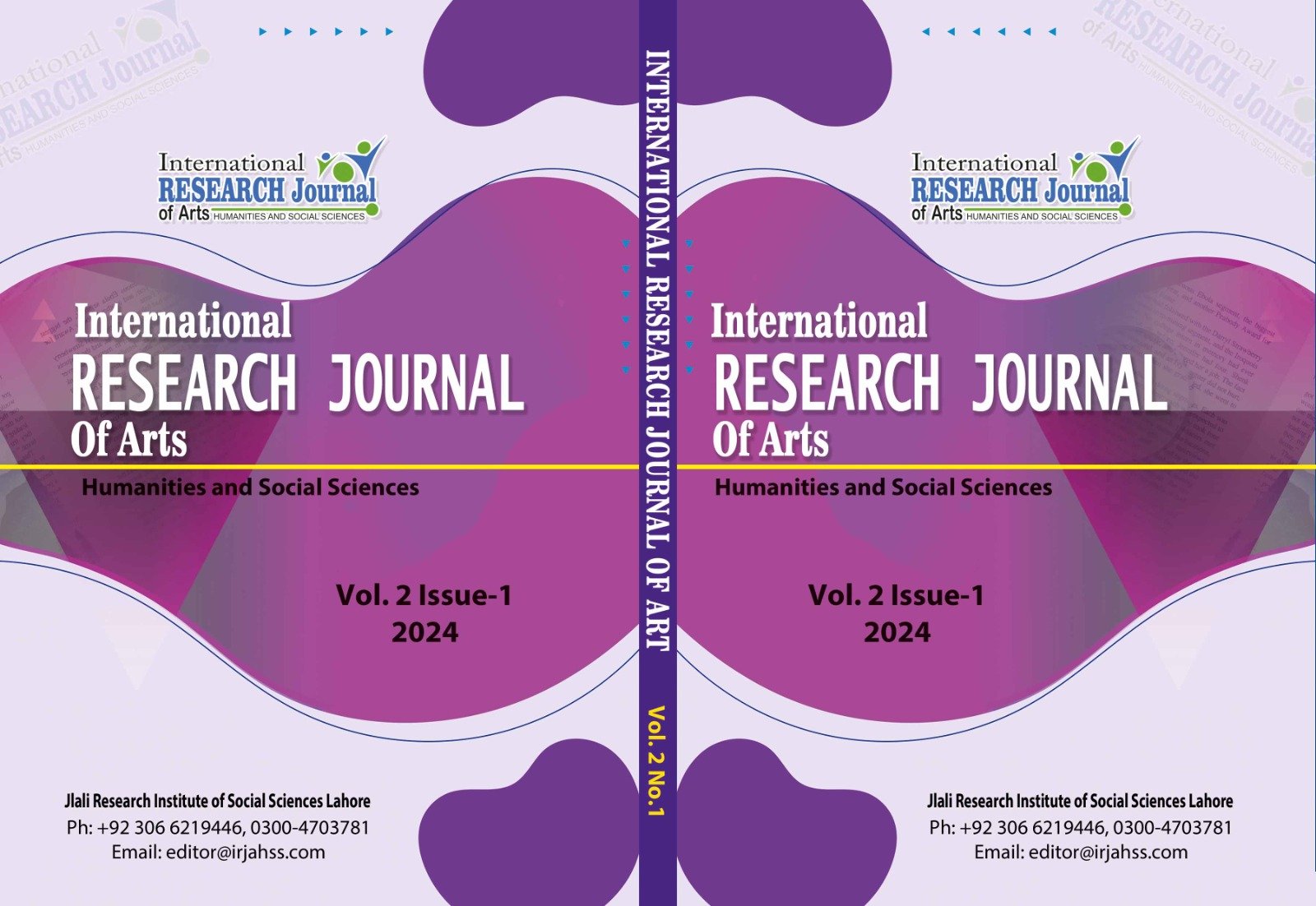The Art of Embossing: Repoussé/Chatrai Technique's and Process Contribution to Pakistan's Cultural and Folkloric Identity
Keywords:
Repousse, Cultural Heritage, Individualism, Craftsmanship, Metalworking.Abstract
Repousse technique is known as chatrai in Pakistan, it is an ancient technique of metalworking which involves hammering from the reverse side for the creation of low relief designs. This is a traditional form of art involved artistic expression, historical significance and cultural identity which plays a vital role in Pakistani heritage. The research explores that the repousse also rooted from the Mughal era. This art reflects the cultural identity including Islamic, Hindu Buddhist and Persian folkloric symbols and elements. Repousse not only considers an artistic tradition but it is also a form of storytelling, myths and cultural narratives. Artisans uses material like brass, silver, gold, and copper into objects of beauty including embellishment in architecture, jewelry, and utensils. The article also indicates the process of this art from sketching to polishing and tools use for this practice. Moreover, the research contextualizes repousse technique with the concept if individualism focusing the unique practice of artisans. Researcher examines the tradition and modern applications in contemporary designs through qualitative research approach. Ultimate this technique not only preserves the cultural heritage but also adapts in today’s market. It represents a pride symbol of Pakistani folkloric identity in vibrant cultural history of Pakistan.
Downloads
Downloads
Published
Issue
Section
License
Copyright (c) 2024 International Research Journal of Arts, Humanities and Social Sciences

This work is licensed under a Creative Commons Attribution 4.0 International License.
Disclaimer: The International Research Journal of Arts, Humanities and Social Sciences (IRJAHSS) upholds the principles of open access, ensuring unrestricted access to scholarly content to foster the sharing and advancement of knowledge. The opinions expressed in the articles solely belong to the authors and do not necessarily reflect the views or policies of the journal's editorial team, editorial board, advisory board or research institute.






